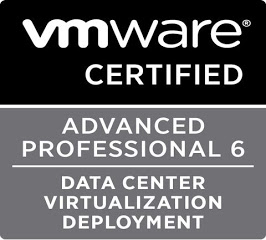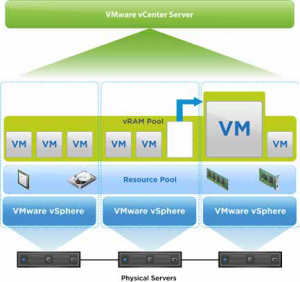Now that we’ve got some VSA’s sharing storage, and some nested ESXi hosts, it’s time to get vCenter up and running.
VMware has a vCenter appliance, which scales quite nicely. One benefit of the vCSA is that it doesn’t require a Windows license – otherwise, the benefits for most running this or the Windows service are negligible.
Step 1: Download the vCenter Server Appliance (vCSA)
This download is located within your “my VMware” under downloads, and vSphere. ( a trial can be downloaded here)
Extract the .zip file, and you should have 4 files:
- VMware-vCenter-Server-Appliance-5.1.0.5100-799730_OVF10.ovf
- VMware-vCenter-Server-Appliance-5.1.0.5100-799730_OVF10.ova
- VMware-vCenter-Server-Appliance-5.1.0.5100-799730-data.vmdk
- VMware-vCenter-Server-Appliance-5.1.0.5100-799730-system.vmdk
Step 2: Import the OVF file
Using the vSphere client, login to your physical ESXi host, and from the file menu, choose “Deploy OVF Template”
Point to the .ovf file – and choose next.
The next screen shows the summary – including disk sizes depending on which provisioning you choose.
Next, Choose the name of the VM, it’s resource pool (if any), which Datastore to store the VM files, and finally – Thick or Thin Provisioning.
After a couple minutes, we are ready to power it on and configure.
Step 3: Configuration
First things first – if you will be using a static IP, go create a DNS record on your domain for the vCenter’s name and IP while it is deploying. In order to assign a static IP, the vCSA will need to be able to resolve it’s hostname.
Power on the VM, and open the console, once it’s booted, it will shows it’s DHCP address.
Browse to https://dhcp_address_here:5480 and login with the default username and password – root / vmware
The vCenter Server setup wizard will appear, with accepting the EULA being the first step.
At this point, Cancel the wizard so we can set a static IP.
As is says on the wizard – (“To configure this virtual appliance with a static IP address, you must first configure the hostname. To do this, cancel this wizard, go to the network address settings. and enter the hostname. Once the hostname is configured, relaunch and complete this setup wizard.”)
Under the Network tab, Choose the Address tab. Change to STATIC, and fill in your IP info and hostname.
Finally, click Save Settings.
Browse to https://new_static_IP:5480 and log back in with root / vmware.
On the right, lets re-launch the Setup Wizard:
Use “Configure with default settings” – This will setup SSO automatically, but not Active Directory Integration. We can do that later or we can choose “Set Custom Configuration – which is what I will do.
Database Settings: Nothing to change here – we will use the embedded database. The only supported external database server is an Oracle DB. Click NEXT.
SSO Settings: Again, nothing to change here. We want to use the embedded Single Sing-On (SSO) deployment. Click NEXT
Active Directory Settings: Click to enable, and enter in your internal Domain name, and a service account. Since this is a lab, I’m going to just use my Administrator account.
Click NEXT.
Finally, click START to begin the configuration.
UH OH!
Error Message!
I went back to my network settings and the hostname did not stick for some reason, although the static IP did (obviously). Be sure to double check the hostname setup in the networking section. Then, configure AD integration by clicking the link, and entering your:
- Internal Domain Name
- Service Account Username
- Service Account Password
That’s it! Now we can open up the console, and point it to this IP. Or, we can use the vSphere Web Client which is installed by default with the vCenter Server Appliance by accessing https://vCSA_IP_or_Name:9443/vsphere-client/
Coming up next in the series: Using the vSphere Web Client, and Setting up the Lab Cluster with HA and DRS.



